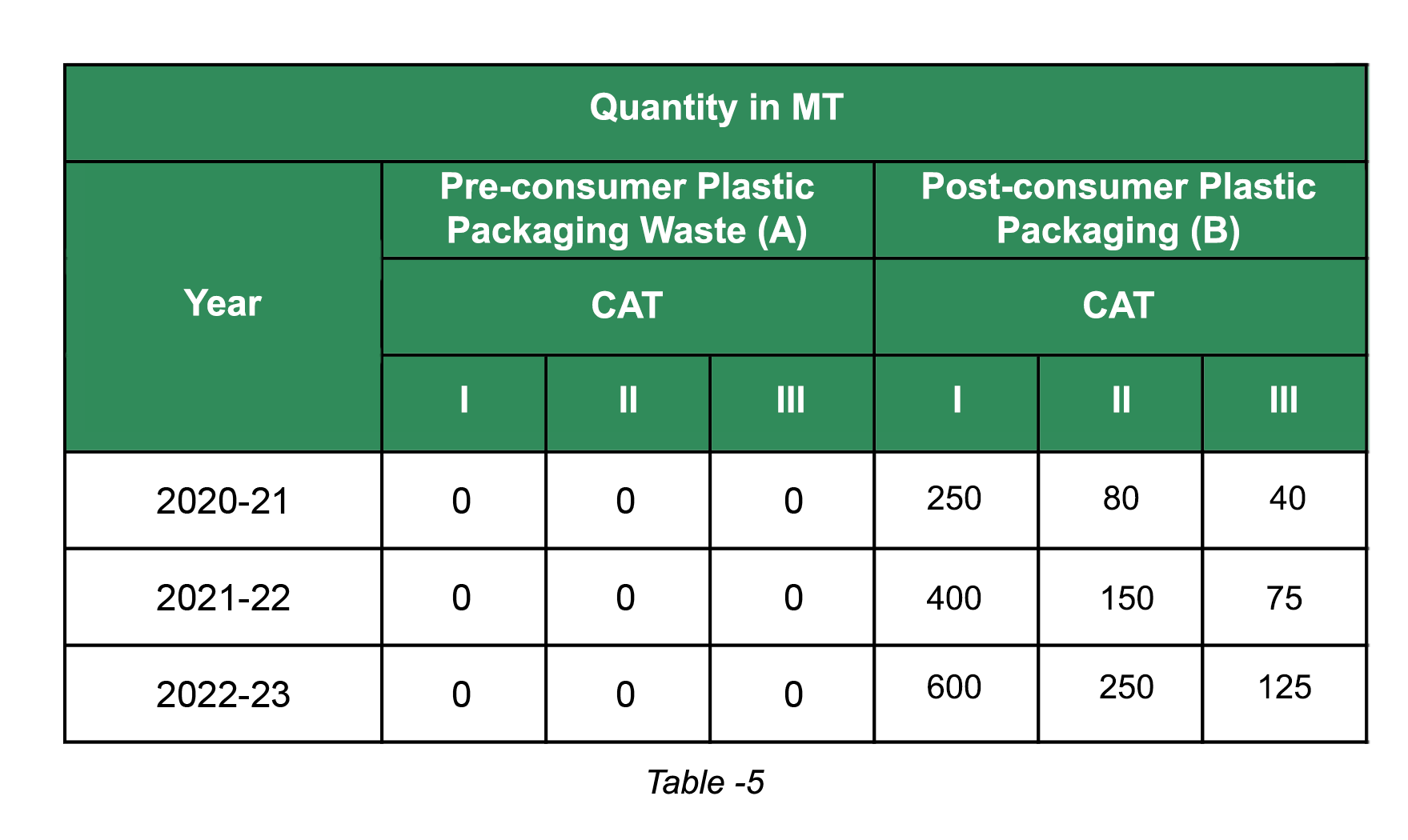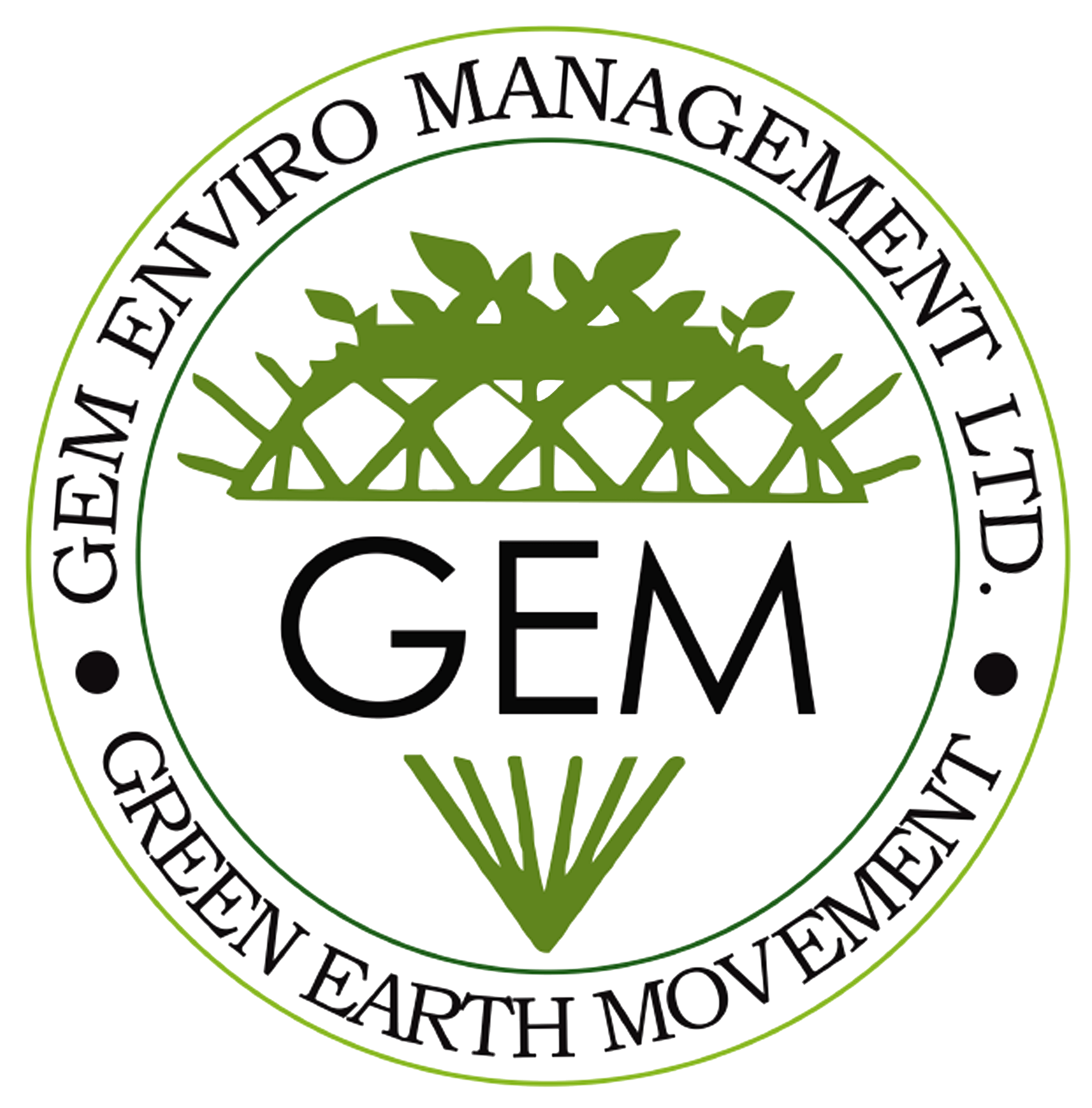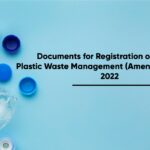How to Calculate EPR Targets for Plastic Waste?
In this article, we shall describe the concept of ‘Extended Producer Responsibility (EPR)’ and explain the method to calculate the EPR targets for Plastic Waste generators under Plastic Waste Management (Amendment) Rules, 2022.
1. Plastic Waste Management (Amendment) Rules, 2022
Plastic Waste Management (Amendment) Rules, 2022 were notified by the Ministry of Environment, Forest, and Climate Change (MoEFCC) on 16 February, 2022.
2. Categories of plastic packaging under EPR
• Category I – Rigid package plastic
Ex: – PET bottles such as Pepsi bottles, hard plastic containers (HDPE) such as Plastic mugs or shampoo bottles.
• Category II – Flexible plastic packaging of single layer or multilayer (more than one layer with different types of plastic).
Ex: – LDPE such as Bread or milk packets, PP such as ice-cream cups, BOPP Films used for food packaging, PVC such as PVC pipes, and many more.
• Category III – Multilayered plastic packaging (at least one layer of plastic and at least one layer of material other than plastic).
Ex: – MLP such as Chips or Maggie packets, TETRA packs such as Frooti/Real juice packs
• Category IV – Plastic sheet or like used for packaging as well as carry bags made of compostable plastics.
Ex: – Any packaging made of compostable plastics.
3. What is EPR?
EPR, as per Plastic Waste rules 2022, is defined as – “the responsibility of a producer for the environmentally sound management of the product until the end of its life”.
4. Formula For Quantification of EPR Obligation for Plastic Waste Generators
The EPR targets for the PIBOs (Producers, Importers & Brand-Owners) shall be determined category-wise, as given in section 7 of Schedule II of Plastic Waste Management (Amendment) Rules, 2022
• EPR Target for Producer (P):
EPR obligation (Q1) in metric tons (MT) = (A + B) – C; where,
A = Average (Avg.) weight (wt.) of plastic packaging (category-wise) sold in the last two financial years
B = Avg. wt. of pre-consumer plastic packaging waste in the last two financial years
C = Quantity supplied to the entities under sub-clause 4 (iii) in the previous financial year
As per sub-clause 4(iii) of Schedule II of the ‘Plastic Waste Management (Amendment) Rules, 2022’, the entities are brand owners (BO) including online platforms/marketplaces/ supermarkets/retail chains other than MSMEs (Micro, Small & Medium Enterprises)
• EPR Target for Importer (I):
EPR obligation (Q2) in metric tons (MT) = (A + B) – C; where,
A = Avg. wt. of plastic packaging (category-wise) imported and sold in the last two financial years
B = Avg. wt. of pre-consumer plastic packaging waste in the last two financial years
C = Quantity supplied to the entities under sub-clause 4 (iii) in the previous financial yr.
• EPR Target for Brand Owner (BO):
EPR obligation (Q3) in metric tons (MT) = (A + B); where,
A = Avg. wt. of plastic packaging (category-wise) sold in the last two financial years
B = Avg. wt. of pre-consumer plastic packaging waste in the last two financial years
• Year wise EPR Targets for PIBOs
The EPR target for PIBO’s shall be determined, category-wise, as given below namely:
Detailed info of these can be seen in Section 7 of “Plastic Waste (Management) Amendment Rules, 2022” on CPCB website – CLICK HERE(Refer section 7.2 for the producers, section 7.3 for the importers and section 7.4 for the brand owners) 
5. Case Study – Calculation of EPR Targets for a Multi-Product Company
a) EPR Target for Producer (P)/ Importer (I):
Let’s take the case of company “XYZ”. This company produces and sells various products having plastic packaging belonging to CAT I, II and III.
The sales (by weight) of plastic packaging made by “XYZ” for each category is as given in table 2 below;

The EPR liability of “XYZ” for different categories of plastic packaging is as follows;
• For CAT I

• For CAT II

• For CAT III
Similarly, we can also calculate the EPR targets of producer “XYZ” for CAT III
b) EPR Targets for Brand owner (BO):
Let’s take the case of company “PQR”. This company is a brand owner and sells various products in the market having plastic packaging belonging to CAT I, II and III.
The sales (by weight) of plastic packaging made by “PQR” for each category is as given in table 4 below;

The EPR liability of BO “PQR” for different categories of plastic packaging is as follows;
• For CAT I

• For CAT II

• For CAT III
Similarly, we can also calculate the EPR targets of Brand Owner “PQR” for CAT III.

 Next Post
Next Post